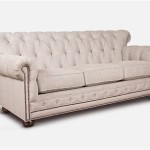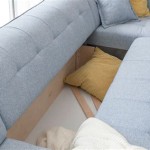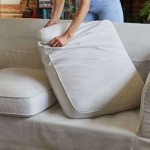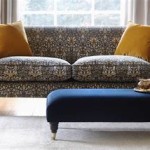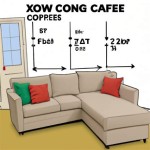Replacement Feet for Sofas: Enhancing Aesthetics, Functionality, and Longevity
Sofa feet, often overlooked, play a crucial role in the overall aesthetics, functionality, and longevity of a sofa. They provide essential support, contribute to the sofa’s style, and protect flooring from damage. Over time, however, sofa feet can become damaged, worn, or simply out of sync with changing design preferences. In such cases, replacing the feet is a cost-effective and relatively simple solution to revitalize a sofa and extend its lifespan. This article explores the various aspects of replacement sofa feet, including their types, materials, benefits, selection criteria, and installation considerations.
Understanding the Importance of Sofa Feet
Sofa feet are more than just decorative elements; they are integral to the structural integrity and performance of a sofa. The most pressing function is structural support. The feet evenly distribute the weight of the sofa and its occupants, preventing undue stress on the frame and upholstery. Inadequate or damaged feet can lead to sagging, uneven support, and ultimately, frame failure. Furthermore, sofa feet elevate the sofa off the floor, providing essential clearance. This clearance allows for airflow, which helps prevent moisture buildup and potential mold growth underneath the sofa. It also simplifies cleaning and vacuuming around the sofa, contributing to a cleaner and healthier living environment.
Finally, sofa feet significantly impact the aesthetic appeal of the furniture. They contribute to the overall style and can be used to complement or enhance the existing décor. Replacing the feet can be a transformative update, allowing one to modernize an older sofa without replacing the entire piece. A wide range of styles, materials, and finishes are available, offering ample opportunities to customize the look of the sofa to personal preferences. Consider the original design of the sofa and the desired outcome when selecting replacement feet. Matching the existing aesthetic or choosing feet that offer a contrasting style can dramatically change the sofa's appearance.
Types of Replacement Sofa Feet
The market offers a diverse array of sofa feet, each with its unique characteristics and suitability for different sofa styles and functional requirements. One common type is wooden legs, which are versatile and available in various shapes, sizes, and finishes. They can range from simple, straight legs to more ornate, carved designs. Wood provides a natural warmth and complements a wide range of upholstery fabrics and room decors. Tapered wooden legs are a classic choice, adding a touch of elegance and sophistication. Bun feet, with their rounded shape, are often used on traditional or vintage sofas, providing a sturdy and grounded appearance. Square wooden legs offer a more contemporary and minimalist look.
Metal legs are another popular option, offering a sleek, modern aesthetic. They are typically made of steel, aluminum, or chrome and can be finished in various colors, such as silver, black, or gold. Metal legs are known for their durability and stability, making them suitable for heavier sofas or those that experience frequent use. Straight metal legs provide a clean and minimalist look, while angled metal legs add a touch of dynamism and visual interest. Hairpin legs, a mid-century modern staple, are characterized by their slender, angled design and provide a retro-inspired feel.
Plastic legs are a budget-friendly option, often used on more affordable sofas. While they may not offer the same aesthetic appeal or durability as wood or metal, they can still provide adequate support and protection for the sofa. Plastic legs are available in various shapes and sizes, and some are designed to mimic the look of wood or metal. Adjustable legs are designed to compensate for uneven floors. These legs feature a threaded insert that allows a range of height to be precisely adjusted, ensuring the sofa sits level and stable. Hidden feet, also known as glides, are often made of plastic or felt and are designed to be discreetly placed under the sofa. They primarily serve to protect flooring from scratches and scuffs and may offer minimal elevation.
Materials and Finishes: Considerations for Durability and Style
The material and finish of sofa feet significantly influence their durability, aesthetic appeal, and suitability for different environments. Wood is a classic choice, offering a natural warmth and versatility. Hardwoods, such as oak, maple, and beech, are known for their strength and durability. Softwoods, such as pine, are more affordable but may be more prone to scratches and dents. Wooden sofa feet can be finished in various ways, including staining, painting, and varnishing. Staining enhances the natural grain of the wood, while painting allows for a wider range of color options. Varnishing protects the wood from moisture and wear.
Metal is a durable and modern option. Steel is strong and resistant to corrosion, while aluminum is lightweight and resistant to rust. Chrome provides a sleek, polished finish that is easy to clean. Metal sofa feet can be powder-coated in various colors, providing a durable and scratch-resistant finish. Powder coating also offers a matte or textured look, depending on the application technique.
Plastic is a cost-effective material, though it doesn't have the same durability as wood and metal. It is water-resistant and easy to clean, making it a practical choice for families with children or pets. Plastic sofa feet are often made of polypropylene or polyethylene, which are durable and resistant to cracking. The finish of plastic sofa feet can range from smooth to textured, and they are available in various colors.
The choice of material and finish depends on the desired aesthetic, the level of durability required, and the budget. For high-traffic areas or households with children or pets, opting for durable materials and scratch-resistant finishes is advisable. The sofa's existing style and the room's overall décor should also inform the selection of materials and finishes.
Key Benefits of Replacing Sofa Feet
Replacing sofa feet offers several advantages, extending beyond simply improving the sofa's appearance. Enhanced aesthetics is a key benefit. Replacing old, worn, or outdated feet can dramatically improve the overall look of the sofa and complement the room's décor. New feet can modernize an older sofa, add a touch of elegance, or create a completely new style.
Improved stability and support are also benefits. Damaged or inadequate feet can compromise the sofa's stability and lead to uneven support. Replacing them with sturdy, well-designed feet ensures that the sofa sits level and provides adequate support for its occupants. This can also prevent further damage to the sofa frame.
Floor protection is another important benefit. Sofa feet protect flooring from scratches, scuffs, and dents. Scratches and scuffs on hardwood floors, carpeting, or tile surfaces are prevented by feet that are either constructed of smooth materials or have felt or plastic caps. Replacing worn or damaged feet with new ones ensures that the flooring remains protected.
Increased sofa lifespan can be achieved. By providing adequate support and preventing stress on the frame, replacement feet can extend the lifespan of the sofa. Investing in new feet is a cost-effective way to maintain the sofa's structural integrity and avoid the need for costly repairs or replacements.
Selecting the Right Replacement Sofa Feet: Factors to Consider
Choosing the right replacement sofa feet requires careful consideration of several factors to ensure a proper fit, optimal performance, and desired aesthetic. One should consider the sofa style and décor. The replacement feet should complement the sofa's existing style and the overall décor of the room. Consider the shape, material, finish, and height of the feet to ensure they align with the desired aesthetic. A classic sofa might benefit from tapered wooden legs or bun feet, while a modern sofa might look best with sleek metal legs.
Dimensions and height are also important. Measure the height of the existing feet to ensure that the replacements are the same height or slightly taller if desired. The dimensions of the mounting hardware should also be checked to ensure they are compatible with the sofa frame. Inconsistent leg heights can result in an unstable, wobbly sofa. Consider the existing leg mounting system. Most sofas use either a screw-in or bolt-on attachment method. Ensure the replacement feet are compatible with the existing mounting points. Modifying the sofa frame to accommodate different mounting systems can be complex and may compromise the structural integrity.
Weight capacity is another important consideration. Select feet that are capable of supporting the weight of the sofa and its occupants. Heavier sofas require sturdier feet made of durable materials, such as hardwood or steel. The weight capacity of each foot should be clearly stated by the manufacturer. Evaluate the floor type. The type of flooring can influence the choice of feet. For hardwood floors, felt pads or plastic glides are recommended to prevent scratches and scuffs. For carpeting, wider feet may be more stable and prevent the sofa from sinking into the carpet. Select feet engineered to provide adequate traction on the existing floor surface.
Installation Considerations and Best Practices
Installing replacement sofa feet is a relatively straightforward process that can be completed with basic tools and some patience. Prior to commencing the installation, gather all necessary tools and materials, including the replacement feet, a screwdriver or wrench (depending on the mounting hardware), and a measuring tape. A power drill with appropriate drill bits may be required for more complex installations. Turn the sofa upside down to access the existing feet. This may require assistance from another person, especially for heavier sofas. Exercise caution to avoid damaging the sofa or injuring yourself.
Remove the existing feet by unscrewing or unbolting them from the sofa frame. If the feet are stuck, use a penetrating oil or lubricant to loosen them. Clean the mounting surfaces on the sofa frame to remove any dirt, debris, or adhesive residue. This will ensure a secure and stable connection for the new feet.
Attach the new feet to the sofa frame using the appropriate screws or bolts. Ensure that the feet are aligned correctly and securely fastened. Using a level is recommended to ensure that all feet are at the same height. Once the feet are securely attached, turn the sofa right side up and test its stability. The sofa should sit level and not wobble. If necessary, adjust the height of the feet to compensate for uneven floors.
Consider the use of protective pads. Applying felt pads or plastic glides to the bottom of the feet can protect flooring from scratches and scuffs. These pads are available in various sizes and shapes and can be easily attached with adhesive. Inspect the installation regularly to ensure that the feet remain securely attached and the pads are in good condition. Loose feet can compromise the sofa's stability and potentially damage the frame.

Sofa Bun Feet Replacement Legs For Sofas Heritage Components

Willstar 4pcs Furniture Legs Wooden 50mm Height Sofa Eucalyptus Round Bun Feet Replacement For Couch Bed Com

Willstar 4pcs Furniture Legs Wooden 50mm Height Sofa Eucalyptus Round Bun Feet Replacement For Couch Bed Com

4pcs Sofa Legs Wood Furniture Pack Replacement Foot For Chair Recliner

Unique Bargains Wood Furniture Legs Replacement Feet For Sofa Chair 8pcs Com

Chân Ghế Có Và Bàn Giường Thay Thế Dốc 8 15cm Trung Quốc Sofa Leg

Unique Bargains Wood Furniture Legs Replacement Feet For Diy 4pcs Com

Golden Sofa Legs Round Solid Metal Furniture Replacement Perfect For Mid Century Modern Great

Hotbest 4pcs Sofa Legs Wooden Furniture Replacement Feet For Table Chair Tea Cabinet Etc Com

Unique Bargains Adjustable 8 Inch Stainless Steel Furniture Legs 4pcs Sofa Chair Risers And Shelves Replacement Com


